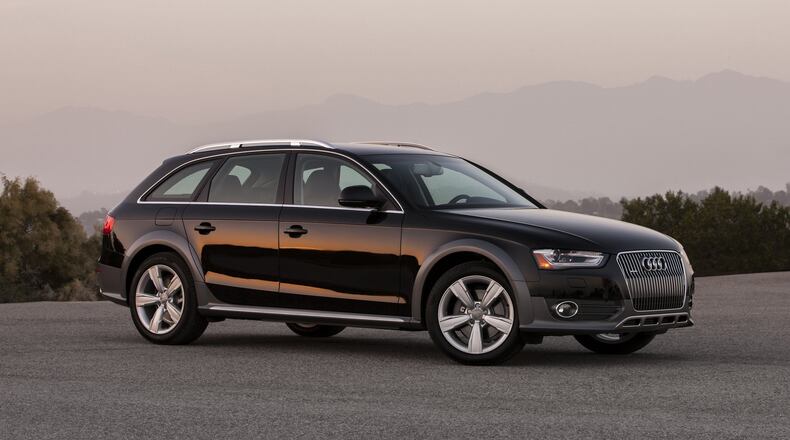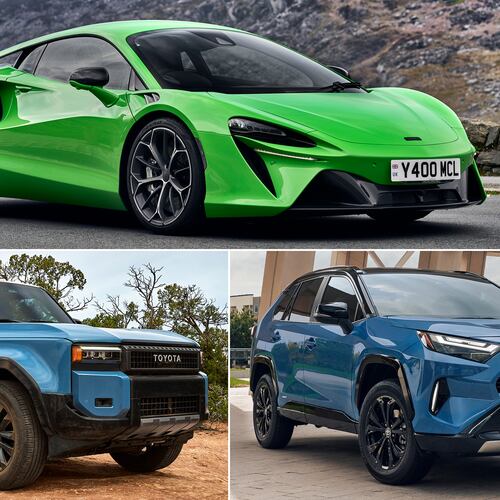2014 AUDI ALLROAD QUATTRO:
Type of vehicle: Five-door, five-passenger all-wheel-drive wagon
Fuel economy: 20 miles per gallon city, 27 highway
Weight: 3,885 pounds
Engine: Turbocharged, direct-injected 2-liter four-cylinder with 220 horsepower and 258 pound-feet of torque
Transmission: Eight-speed Tiptronic automatic with sport and manual modes
Performance: 0 to 60 mph in 6.4 seconds
Base price, excluding destination charge: $40,700
Price as tested: $47,745
Sources: Audi of America; Motor Trend
Those of us who grew up in the Vitalis-slicked early 1960s — steeped in Vic Damone and Perry Como — suffer now from station wagon palpitations.
Just mention “Ford Country Squire” or “Dodge Royal Sierra Custom,” and I get the sweaty willies.
Back when life was all flattops and white socks, good old American wagons — most slathered in fake wood — seemed to slump in every other driveway, too big for their garages.
They floated down the streets, swaying from side to side on their white sidewalls like fat old men in bad shoes.
Here’s the irony, of course: Many of those comical cargo containers from the ’50s and ’60s are now considered collectible cars.
And as I have grown to appreciate some of the great modern wagons — muscular boxes like the AMG E-series Mercedes-Benz or the Audi Avant or Cadillac’s CTS-V wagon — they are now nearly extinct, shoved aside by minivans and crossovers.
In fact, the 2014 Audi Allroad Quattro I had recently is one of the last true wagons left in Audi’s lineup.
My dark blue Allroad, built on a midsized A4 platform, didn’t even vaguely resemble the road walruses of my past.
Kind of taut and compact, the all-wheel-drive Allroad looked a bit like a souped-up Subaru Outback.
A long, slightly raised hood topped one of Audi’s typically enormous grilles and conventional swept-back headlamps.
But below the grille was a sleek, highly stylized stainless-steel skid plate of sorts. More underbody armor protected the powertrain.
Still, with a modest 7.1 inches of ground clearance and no locking differential, the Allroad is more butched-up wagon than tires-in-the-air dirt-pounder.
Atop the Allroad’s gently curving top, for instance, were graceful aluminum roof rails to which you could attach camping gear or overly chatty passengers.
Although the sides were mostly flat, the Allroad sported great proportions with minimal overhangs front and rear.
Gray cladding — unusual for Audi — clung gracefully to the wheel openings and lower rocker panels, embellishing the Eddie Bauer look.
Likewise, beefy 245/45 street tires on 18-inch alloy wheels added to the car’s tough-but-tailored appearance.
But what exactly is the Allroad besides an attractive five-door wagon with a fairly rich window sticker of $47,745?
I came to view it as a highly capable, all-weather wagon with seating for four (and maybe five), and 28 cubic feet of cargo space behind the fold-down rear seats.
Moreover, it is a vastly better driver than any of the tall, overweight crossovers that dominate the auto industry.
Powered by Audi’s ubiquitous turbocharged 2-liter four-banger, the Allroad offered 220 horsepower and an eight-speed automatic to move its 3,900 pounds of bulk.
It did a pretty commendable job. Torquey, smooth and refined, the well-tuned little engine shoves the Allroad to 60 mph in 6.4 seconds, according to Motor Trend.
It’s also reasonably economical, providing 20 miles per gallon in town and 27 on the highway.
More important, maybe, the Allroad felt and drove like a high-end Audi sedan.
Like many all-wheel-drive Audis, the chunky Allroad flung itself into corners aggressively rather than carving through them with surgical precision.
But it maintained its balance pretty well, leaning little and relying on good four-wheel-drive grip.
And for the most part, there was no price to pay in the Audi’s ride. Although certainly German-firm, it slipped over smooth surfaces with little more than reassuring tire thunks.
Initially, I thought the car’s steering felt too overly boosted and lacked road communication.
But on Dallas’ flat, mostly straight traffic-filled thoroughfares, the Allroad generally felt agile and athletic.
All of the vehicle’s off-road illusions, incidentally, evaporated once you slid into its cozy black leather interior.
It looked like most Audis, which is typically pretty good.
A rolling black dashboard wrapped around a horizontal center stack, with the large gauges on the instrument panel trimmed in silver.
The navigation/audio control screen was mounted high on the dash so you could catch a quick glimpse while still avoiding the weaving texter in front of you.
The black door panels were mostly plastic, which seemed a bit cheap on a vehicle that’s closing in on 50 grand.
The car’s government-gray headliner also looked a little short of Audi’s usual high benchmarks.
But the leg- and head-room in back were more than adequate, and the sculpted black leather seats looked and felt great.
Now, if we could just get Audi to drop its supercharged 3-liter V-6 into the useful, likable Allroad.
About the Author
Keep Reading
The Latest
Featured


